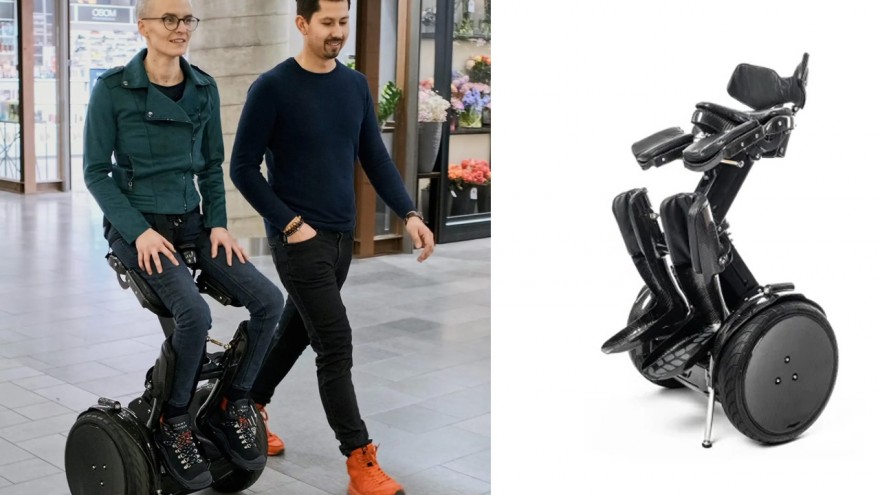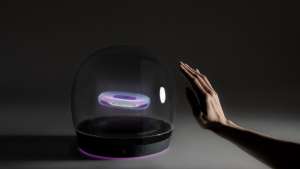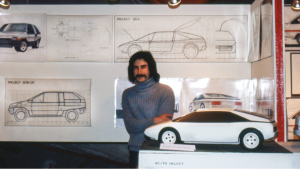The brainchild of Chronus Robotics, a Lithuanian-based engineering and design company founded by the Griška family, the Kim-e is a ‘self-balancing personal mobility robot’.
Designed with the intention of enhancing dignity and freedom for wheelchair users, particularly those with paraplegia or other lower-limb disabilities who are active and seeking participation in social life and the labour market, the Kim-e not only helps them get around with minimum external human assistance, but also enables them to stand up and sit down with similar convenience.
‘Sitting at a desk, on a couch, or in a car – a person with a disability enjoys being seen as just a person. It seems the disability often becomes visible only when a wheelchair enters the picture,’ explains a spokesperson for Chronus Robotics. ‘Our challenge was to keep the person visible while leaving not only the wheelchair but also the disability unnoticed. Using our patent-pending technologies, we have achieved our goal: If Kim-e is to be called a wheelchair, it is an invisible one.’
The self-balancing mobility robot can lift the user in a single-button operation. It has an integrated shock absorber, and is controlled by intuitive upper-body movements, leaving the user’s hands free. Additionally, at just 59 cm wide, the Kim-e is more compact than a standard wheelchair; it weighs 38 kg, can climb a 20-degree slope and has a top speed of 20 km/h.
According to Chronus Robotics, the Kim-e also has a clear positive effect on spinal health in comparison to conventional wheelchairs. The muscles of the vertebral column are involved in device control, while prolonged use in riding posture provides positive effects on the thorax: the ergonomic posture has a positive effect on cardiovascular and respiratory function, while diaphragm pressure is significantly reduced, facilitating better digestion and bowel movements.
Read more







